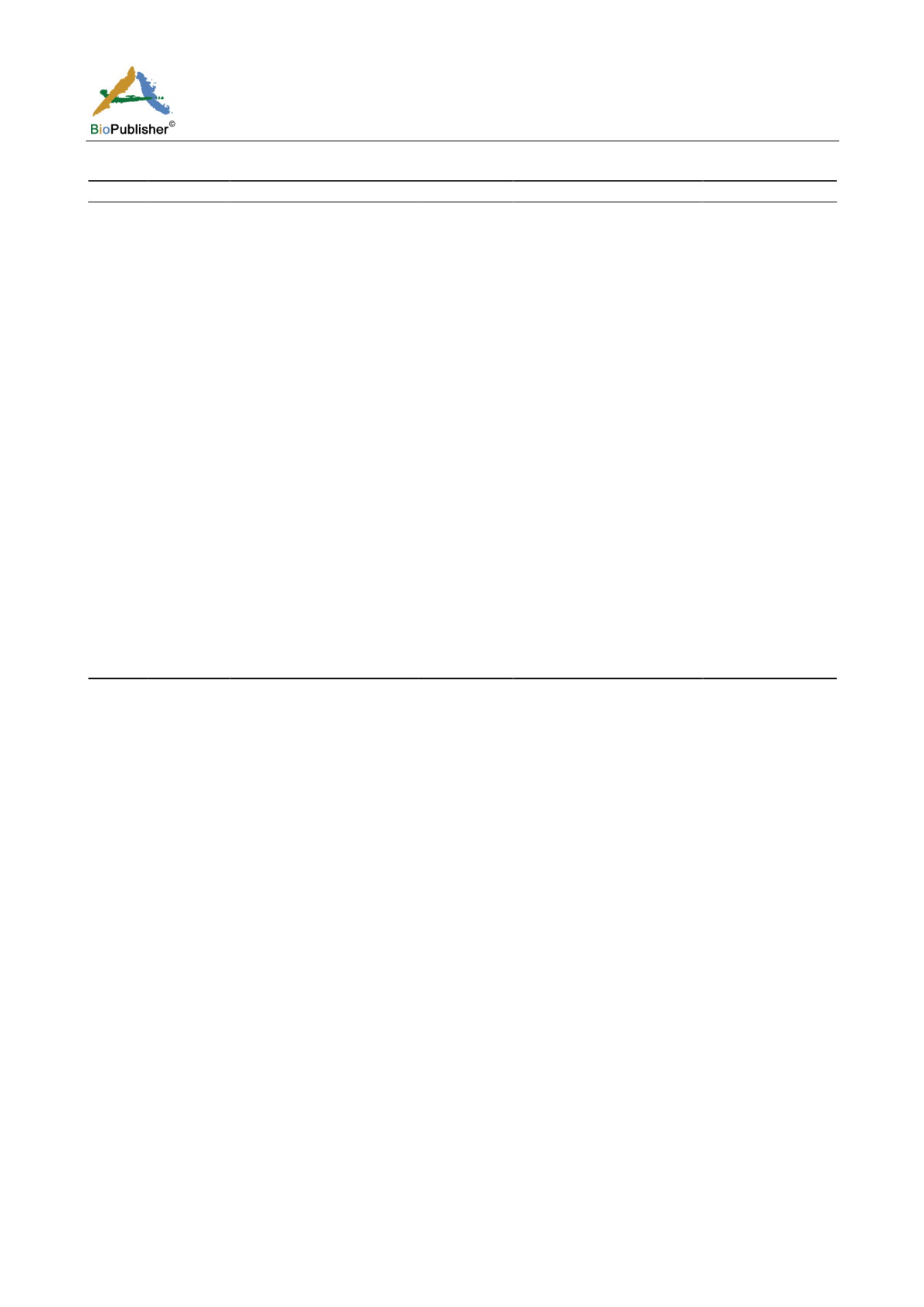
International Journal of Marine Science, 2017, Vol.7, No.16, 141-160
148
Table 9 Health hazard indicating bacterial load in water and sediment of the three sampling sites of the Karnafully River Estuary
Month
Sample
Site
TBC(×10
2
)
E. coli
Streptococci
sp.
Staphylococci
sp.
March
Water
Near Shah Amanat Bridge
4.03
30.67
172.33
11.0
Near Sadar Ghat
3.95
22.67
126.67
5.00
Near Jetty No. 15
3.94
24.67
148.33
7.00
Sediment
Near Shah Amanat Bridge
6.32
100.67
203.00
20.33
Near Sadar Ghat
5.86
44.67
177.67
9.33
Near Jetty No. 15
5.71
79.00
162.0
6.67
April
Water
Near Shah Amanat Bridge
3.81
30.33
185.67
10.33
Near Sadar Ghat
4.45
34.67
134.67
6.33
Near Jetty No. 15
3.97
22.33
188.33
8.33
Sediment
Near Shah Amanat Bridge
5.96
129.67
266.33
16.67
Near Sadar Ghat
6.13
64.67
226.33
16.67
Near Jetty No. 15
5.94
76.67
164.00
11.67
June
Water
Near Shah Amanat Bridge
4.20
33.00
200.67
14.00
Near Sadar Ghat
3.99
29.00
166.33
12.33
Near Jetty No. 15
3.88
16.67
118.33
5.33
Sediment
Near Shah Amanat Bridge
6.37
108.67
269.0
14.33
Near Sadar Ghat
6.22
93.67
215.67
18.33
Near Jetty No. 15
5.76
54.00
108.0
17.00
July
Water
Near Shah Amanat Bridge
4.19
22.00
145.33
9.33
Near Sadar Ghat
4.27
39.00
164.33
7.33
Near Jetty No. 15
3.83
15.33
134.0
10.33
Sediment
Near Shah Amanat Bridge
6.16
42.67
189.33
10.67
Near Sadar Ghat
6.23
54.00
175.67
20.00
Near Jetty No. 15
6.12
68.67
144.67
13.33
Note: Source: Alam (2005)
2.5 Fish diversity
Total 30806 numbers of species were found and the range of species number was from 397 to 1296 with a mean of
855.72±202.58 (Habib, 2011). According to Khan (2005) there are about 51 species under 23 families were found
in the Karnafully River Estuary. Among seventy four (74) fish species have been reported by Bhuiyan and Gafur
(1977). Twenty eight (28) have neither obtained in sample nor interviewing to fishermen revealed to exit which
showed in Kamal (1992) observation. This is probably due to huge pollutant discharges from various sources into
the estuary. Pollution status and its hazardous effects in the Karnafully River Estuary have been reported by Khan
and Talukder (1993) and Mahmood et al. (1992). Diversity of ichthyofauna is closely related with
physico-chemical parameters. Species distribution also vary temporal and spatial basis. In the monsoon, species
diversity was found than that of the any other seasons (Khan, 2005). The combination of diverse fluctuating
parameters are responsible for distribution and occurrence of ichthyofauna in the estuarine waters (Zafar, 1986).
3 Pollution Sources and Industries
3.1 Major sources of pollution
Water is the most vital element among the natural resources and is crucial for the survival of all living organisms
including humans, for food production and economic development (Shiklomanov, 1993). Surface water of the
country is vulnerable to pollution from untreated industrial effluents, municipal wastewater, runoff from chemical
fertilizers and pesticides, and oil and lube spillage in the coastal area from the operation of sea and river ports
(Hossain, 2001). Water quality depends on effluent types and discharge quantity from different types of industries,
types of agrochemicals used in agriculture and seasonal water flow and dilution capability by the river system
(DHV, 1998). Industries along the side of the River Karnafully damp 50 to 60 ton of wastes per day directly into
the river (Table 10).


